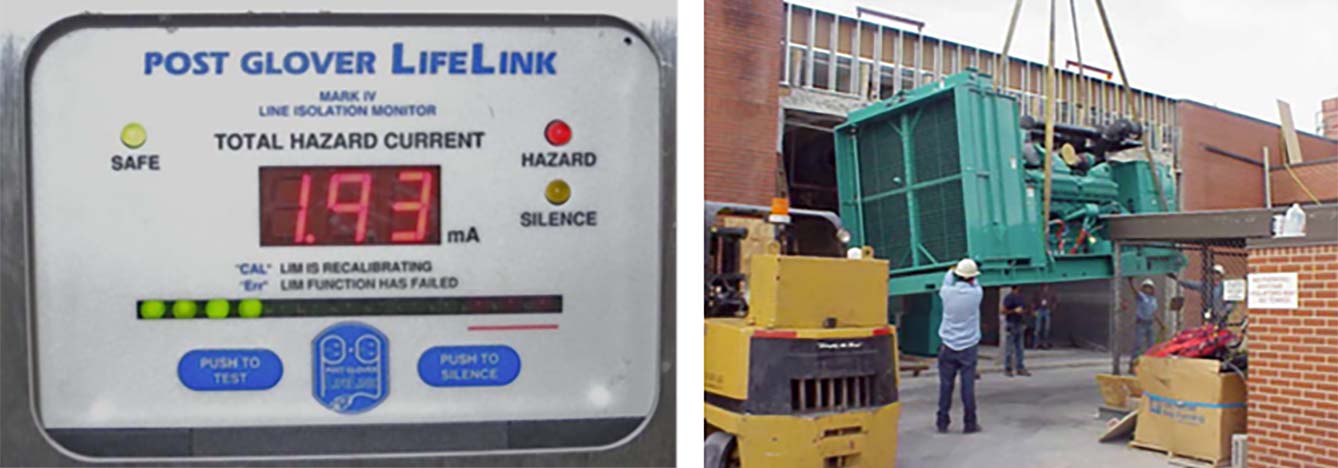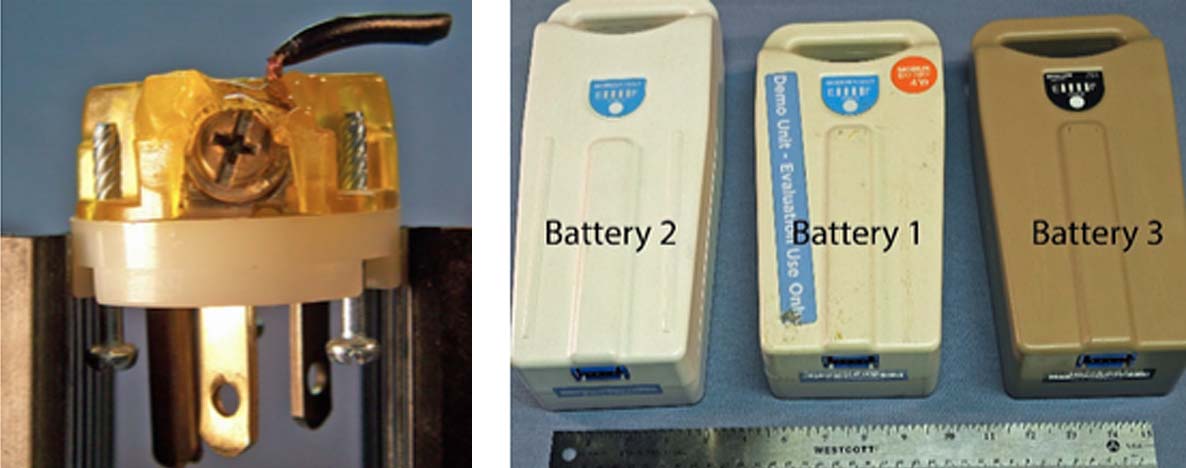Electrical power is an underlying issue in many forensic engineering cases. In some cases, there are questions about the power distribution system. For example, did the emergency generator switchgear function correctly during loss of power from the regional electrical system? In other cases, questions are raised regarding failure of a medical device. For example, did a faulty power plug create an unsafe condition?

Electrical power distribution problems may be related to the conventional power system, the emergency power system (left), or a special system such as a Line Isolation Monitor (LIM) for an isolated power (below) or a ground-fault circuit interrupter (GFCI) device. Electrical power distribution systems are covered by several codes and standards. They also require extensive inspection, testing, and maintenance.
Electrical power is generally supplied to medical devices through a power cord or by internal batteries. There are several ways that the power cord connection can fail, often through damage to the power plug (left, hospital-grade plug melted due to improper wiring). Battery problems are common, ranging from loss of capacity to overheating of lithium batteries (below).

References
Electrical Safety Manual. Matt Baretich. 2015. Association for the Advancement of Medical Instrumentation.
